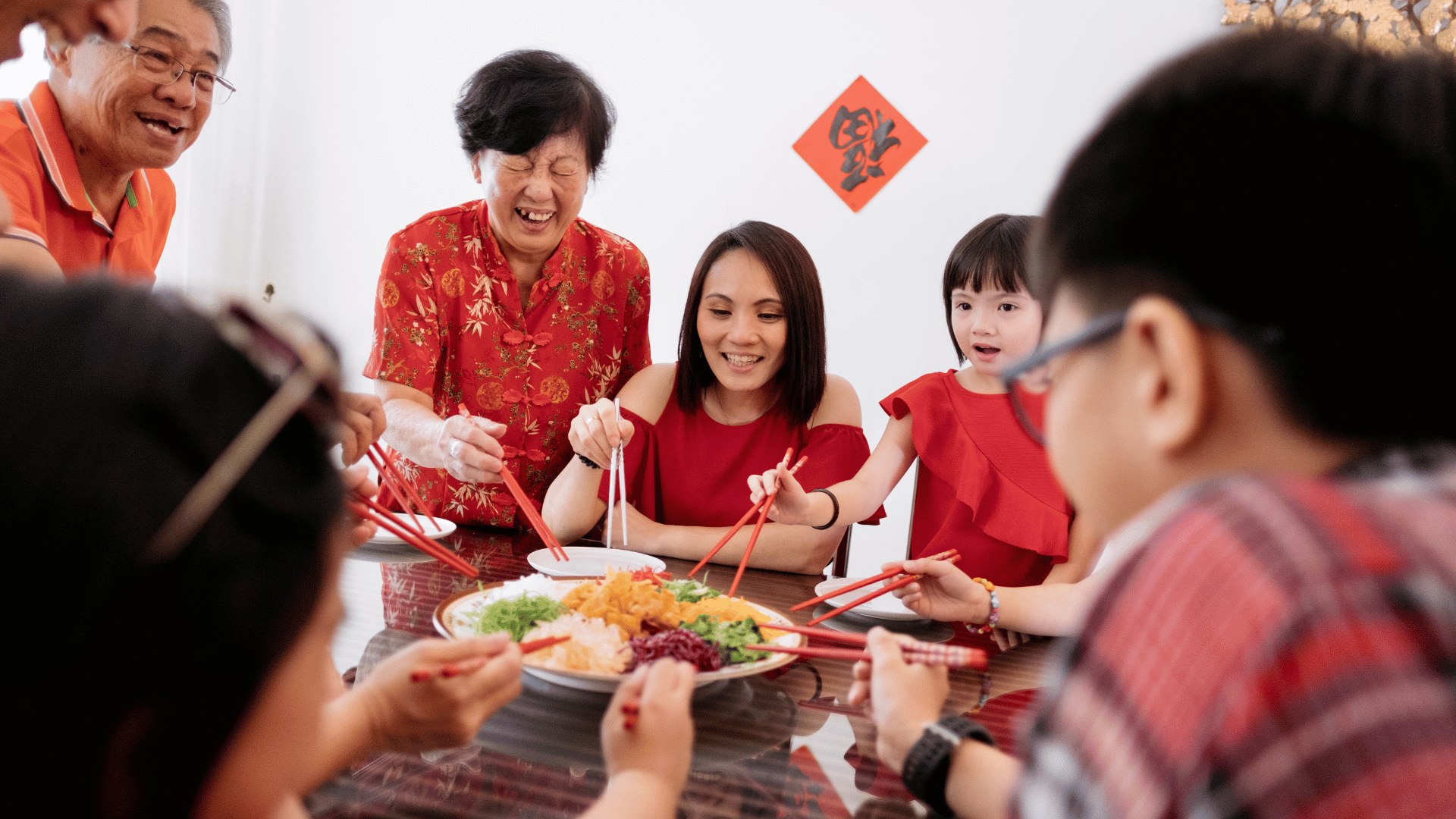In the Philippines, cultures and traditions from all walks of life converge. There is always room for one more celebration among Filipinos. As the Lunar or Chinese New Year's Eve approaches, the Filipino spirit eagerly embraces the festivities, turning the streets into a sea of red and gold and the air buzzing with excitement. On February 9, 2024, the Lunar or Chinese New Year's Eve here in the Philippines promises to be an even more special occasion as communities across the country prepare to welcome the Year of the Dragon with excitement and joy.
The Lunar New Year, or Chinese New Year, also known as the Spring Festival, is a time-honored celebration that transcends borders and resonates with various Asian communities, including the vibrant Chinese-Filipino population in the Philippines. As we explore the heart of the Lunar New Year celebrations in the archipelago, let's explore what to do on Chinese New Year and how this annual event is not just a festival but a testament to the unity in diversity that defines the Philippines.
Join us on a journey through the vibrant streets, elaborate festivities, and heartwarming traditions that mark the Lunar or Chinese New Year in the Philippines.
Historical Roots of the Lunar New Year in the Philippines
The celebration of Lunar New Year, also known as Chinese New Year, holds deep historical roots in the Philippines. Dating back to the pre-colonial era, trade routes connected the Philippines with neighboring Asian countries, fostering cultural exchanges that included the Lunar New Year festivities. The arrival of Chinese traders and settlers significantly influenced the local customs and practices, gradually integrating Lunar New Year traditions into the rich tapestry of Philippine culture. Over the centuries, the Filipino-Chinese community has played a pivotal role in preserving and promoting these cultural celebrations. Today, the Lunar New Year, also known as the Spring Festival, is widely observed across the archipelago, marked by vibrant parades, dragon dances, lantern festivals, and family gatherings. The festive atmosphere not only reflects the Philippines' historical ties with China but also underscores the nation's commitment to embracing its diverse cultural heritage. The Chinese New Year celebrations in the Philippines stand as a testament to the enduring connections between communities and the ability of traditions to transcend borders and withstand the test of time.
Preparations and Decorations
In the Philippines, celebrating Chinese New Year's Eve for Lunar New Year 2024 is a vibrant and festive affair marked by lively preparations and elaborate decorations. Weeks before the actual celebration, households and businesses alike engage in thorough preparations, from thorough cleaning and decluttering to symbolize the sweeping away of bad luck to the meticulous arrangement of festive decorations. There are also different Chinese lunisolar calendar items that hang in houses and establishments. Traditional symbols like the dragon and phoenix are prominently featured in decorations, embodying strength, power, and harmony. Families meticulously prepare an array of traditional dishes for New Year's Eve dinner, including dumplings and longevity noodles, to signify good luck and a long life. With its kaleidoscope of colors and rich cultural symbolism, the Chinese New Year celebration in the Philippines is a testament to the harmonious blend of traditions in this culturally diverse nation.
Traditional Practices
As a country with a significant Chinese-Filipino community, the festivities are marked by a vibrant display of red and gold decorations, symbolizing luck and prosperity. One traditional practice is the lively dragon and lion dances that weave through the streets, accompanied by the rhythmic beats of drums and cymbals. Family members gather for elaborate feasts, with dishes like tikoy (sweet rice cake) and dumplings considered auspicious for the occasion. Filipino-Chinese households also engage in a thorough cleaning of their homes to sweep away any lingering negativity and make way for good fortune. Additionally, the lighting of firecrackers is a common practice to ward off evil spirits. The blending of Chinese and Filipino traditions during the Lunar New Year celebration reflects the harmonious coexistence of diverse cultures within the Philippines, creating a unique and festive atmosphere that unites communities in the spirit of prosperity and goodwill.
The Dragon and Lion Dances
One of the most captivating and symbolic aspects of the festivities is the traditional dragon and lion dances. These dynamic performances are deeply rooted in Chinese folklore and are believed to bring good luck and prosperity for the coming year. The dragon, a symbol of strength and power, gracefully winds its way through the streets, while the lion, a representation of courage and protection, performs intricate and lively movements. The rhythmic beating of drums, clashing of cymbals, and vivid colors of the dragon and lion costumes create an electrifying atmosphere, captivating audiences of all ages. Beyond the captivating entertainment, these dances hold cultural significance, fostering a sense of unity and multiculturalism in Filipino society. As the dragon and lion dances weave their way through the streets of the Philippines during the Lunar New Year 2024 celebrations, they not only bring joy but also serve as a testament to the diverse and inclusive nature of this annual cultural extravaganza.
Community Festivities
Celebrated with great enthusiasm and joy, the Filipino-Chinese community, as well as other locals, come together to usher in the auspicious occasion. In major cities like Manila, Quezon City, and Cebu, what to do on Chinese New Year looks like a big celebration because of festivities that extend beyond family gatherings. Local communities organize parades, cultural shows, and street fairs that showcase the diversity and unity of the Filipino people. Families and friends gather for sumptuous feasts, sharing meals that symbolize abundance and good fortune. Moreover, the tradition of giving and receiving red envelopes, known as "ang pao," is a common sight, signifying blessings and positive energy for the upcoming year. Through these community festivities, the Philippines showcases its cultural diversity and unity, embracing the rich traditions of the Chinese community and fostering a spirit of togetherness that transcends cultural boundaries.
Food and festivities
In the Philippines, the celebration of Chinese New Year, also known as Lunar New Year, is a vibrant and festive occasion marked by traditional customs, colorful decorations, and, of course, an array of delectable dishes. Filipinos of Chinese descent, as well as the broader community, come together to usher in the New Year with an abundance of symbolic foods that carry special significance. One such dish is the tikoy, a sticky rice cake that symbolizes the wish for a sweet and harmonious life. Families gather to enjoy sumptuous meals featuring ingredients like noodles, which are associated with longevity, and dumplings, which represent wealth and prosperity. Moreover, fish and other seafood dishes are often included to symbolize abundance and prosperity. It is a time when the Filipino-Chinese community showcases their rich culinary heritage, sharing delicious feasts with loved ones and embracing the spirit of hope and renewal that the Lunar New Year represents.
In conclusion, the celebration of Chinese New Year, also known as Lunar New Year, holds a special place in the hearts of Filipinos, transcending cultural and religious boundaries. The vibrant festivities, rich traditions, and strong sense of community that mark this auspicious occasion make it a truly significant event in the Philippines.
Chinese New Year is a moment that highlights the strong bond between two distinct yet equally noteworthy cultures. Each year, as we engage in the festivities, we are reminded of the special connection shared by the Filipino and Filipino-Chinese communities. Whether celebrating at home, in a condominium, or on the streets, the significance of this season cannot be erased. Despite differing backgrounds and beliefs, the celebration unites everyone in a familial spirit.
This coming February 9, a public holiday in the Philippines for Chinese New Year, may the unity and harmony experienced during this festive time continue to resonate throughout the Philippines, fostering a sense of community, understanding, and shared prosperity in the years to come.










